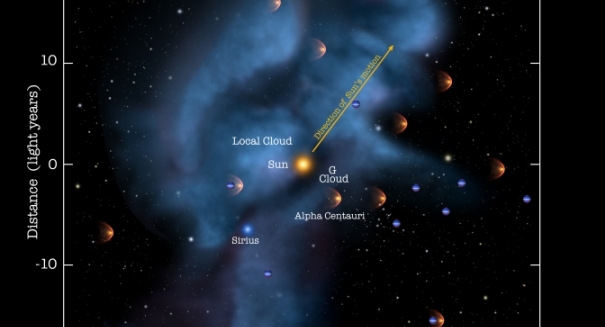
The various sets of data depend on three different techniques to measure the incoming interstellar wind.
Astrophysicists at the University of New Hampshire, as well as other scientists contributing to NASA’s Interstellar Boundary Explorer mission, have found that the particles flowing into the solar system from interstellar space have shifted direction over the last 40 years.
According to scientists, the discovery will help solve the following longstanding mysteries: our origins, our current location, and our next destination. The discovery also gives scientists new information on the dynamic nature of the interstellar winds, which has significance for the size, structure, and nature of our sun’s heliosphere.
“It was very surprising to find that changes in the interstellar flow show up on such short time scales because interstellar clouds are astronomically large,” posits co-author Eberhard Möbius, UNH principal scientist for the IBEX mission. “However, this finding may teach us about the dynamics at the edges of these clouds—while clouds in the sky may drift along slowly, the edges often are quite fuzzy and dynamic. What we see could be the expression of such behavior.”
The data from the IBEX spacecraft reveal that neutral interstellar atoms are streaming into the solar system from a different direction than previously noted. These atoms stream past our planet as the interstellar cloud encircling the solar system cruises by the sun at 50,000 miles per hour.
The most recent IBEX calculations of the interstellar wind direction deviated from those obtained by the Ulysses spacecraft in the 1990s. That variation convinced the IBEX team to compare the IBEX calculations to data collected by 11 spacecraft between 1972 and 2011. They hoped that conducting a comparison of data would help to decide whether the newer spacecraft simply offered more accurate findings, or whether the wind direction itself altered over the last 40 years.
The various sets of data depend on three different techniques to measure the incoming interstellar wind:
1) IBEX and Ulysses directly measure neutral helium atoms as they streamed through the inner solar system.
2) Measurements in the 1970s looked at the fluorescence that happens when the extreme ultraviolet radiation originating from the sun takes off in all directions due to the interstellar helium wind passing by the sun. This technique offers information about the helium inflow direction.
3) The third method to measure the helium wind is based on the fact that after this interaction with the sun’s radiation, a fraction of neutral helium become charged because of the acquisition of an electron. Spacecraft that can examine charged particles are able to determine the longitudinal direction of the particle wind.
In the concluding breakdown of the data sets, the direction of the wind attained most recently by IBEX data varies from the direction attained from the earlier measurements, which implies that the wind itself has altered over the last 40 years.
“Prior to this study, we were struggling to understand why our current measurements from IBEX differed from those of the past,” notes co-author Nathan Schwadron, head scientist for the IBEX Science Operations Center at the University of New Hampshire. “We are finally able to resolve why these fundamental measurements have been changing with time: we are moving through a changing interstellar medium.”

The findings are published in the journal Science.
Leave a Reply